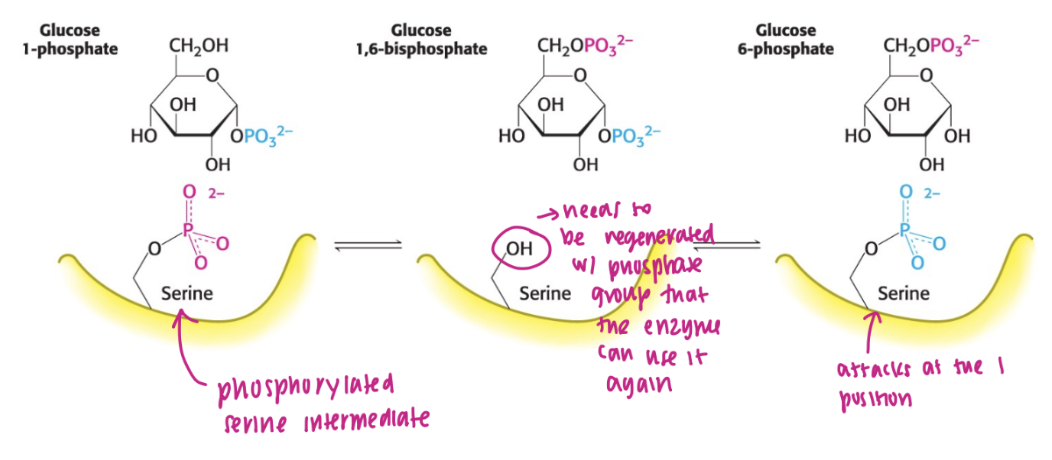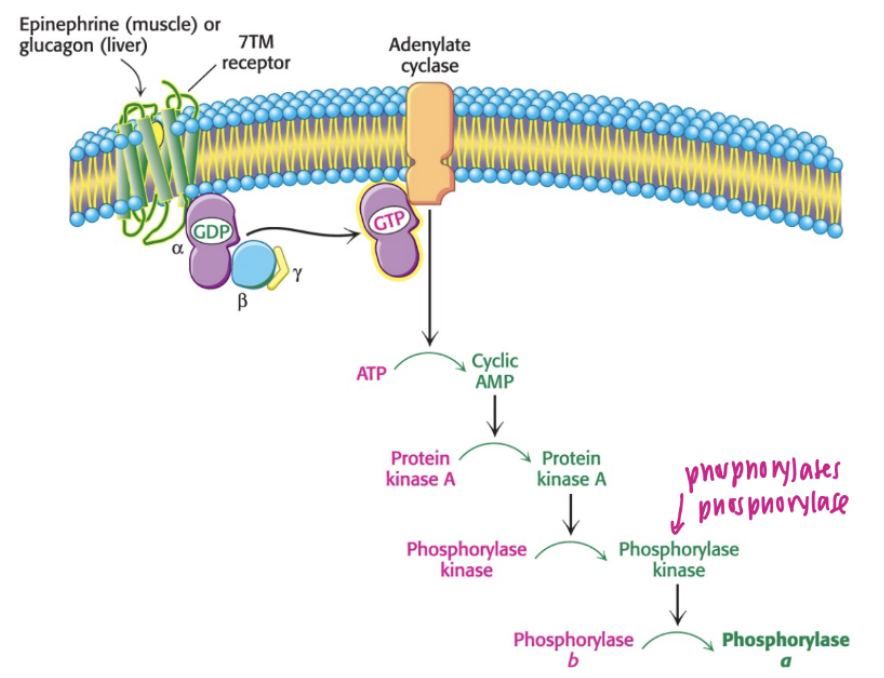Chapter 24: Glycogen Degradation
1/16
There's no tags or description
Looks like no tags are added yet.
Name | Mastery | Learn | Test | Matching | Spaced |
|---|
No study sessions yet.
17 Terms
glycogen phosphorylase
the key regulatory enzyme in glycogen breakdown. cleaves its substrate by the addition of orthophosphate (Pi) to leave glucose 1-phosphate
1,6
The α-___-glycosidic bonds at the branch points are not susceptible to cleavage by phosphorylase
Transferase
shifts a block of three glucosyl residues from one outer branch to another
alpha-1,6-glucosidase
also known as the debranching enzyme, then hydrolyzes the bond,
resulting in the release of a free glucose molecule
phosphorolysis
The cleavage of a bond by the addition of orthophosphate is referred to as
Phosphoglucomutase
converts glucose 1-phosphate into glucose 6-phosphate
phosphorylated serine
Active site of phosphoglucomutase contains a _____________ residue
C-6 hydroxyl, glucose 1,6-bisphosphate
The phosphoryl group is transferred from serine residue to _________ group of G1P to form ________________
C-1 phosphoryl, serine, glucose 6-phosphate
The ________ group of this intermediate is then shuttled to the same ______ residue, resulting in the formation of ___________ and the regeneration of the phosphoenzyme
liver
which part of body contains glucose 6-phosphatase
glucose 6-phosphatase
enzyme that cleaves glucose 6-phosphate into glucose
Phosphorylase
______________ is a key regulatory enzyme and exists in two forms: a and b
a form
_____ is the more active form (R state); phosphorylated phosphorylase
b form
_____ is the less active form (T state); unphosphorylated phosphorylase

-
draw out phosphoglucomutase mechanism

-
draw out epinephrine pathway mechanism
Protein phosphatase 1 (PP1)
removes phosphoryl groups from phosphorylase kinase and glycogen phosphorylase